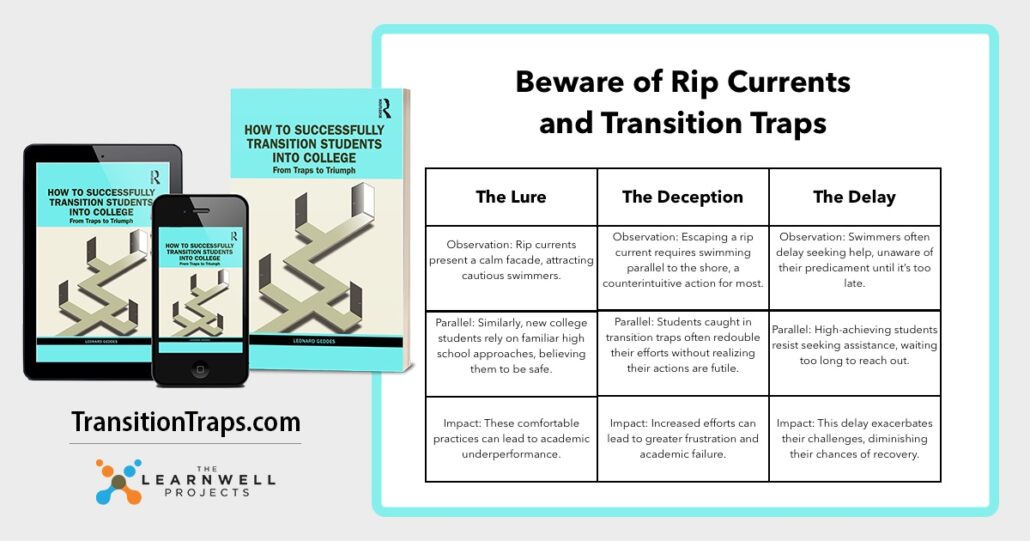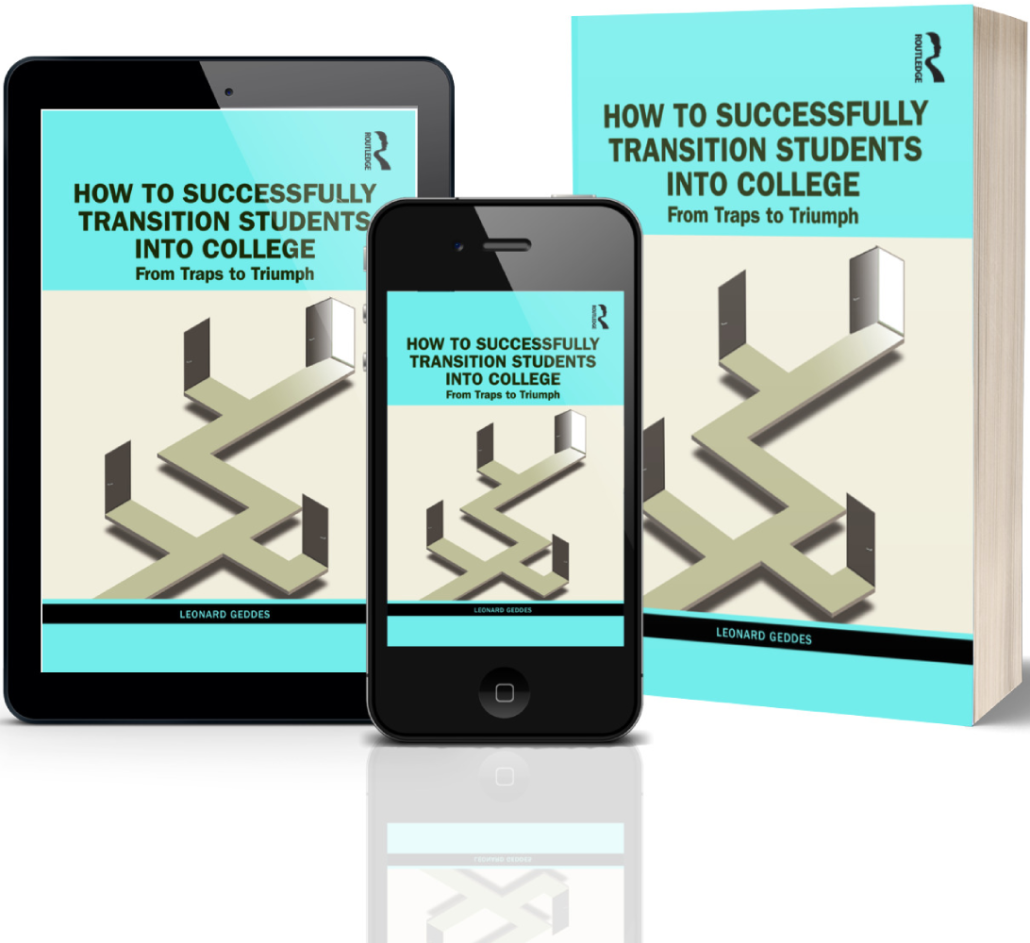On July 4th, 2019, I had a striking revelation that inspired me to write my recently published book, How to Successfully Transition Students into College: From Traps to Triumph.
My family was staying with our extended families in a beachfront house on Kure Beach, a small town off the North Carolina coast. As the day unfolded, lifeguards valiantly rescued thirteen swimmers caught in rip currents, each struggling to escape the powerful grip of the tides. It was a staggering sight—a constant stream of unsuspecting families falling prey to the same perilous mistake. I couldn’t help but wonder why this particular day had witnessed such an alarming number of near-disasters.
The beachgoers were well aware of the dangers, with red flags raised to signal the rough seas. Yet, every half an hour or so, someone would find themselves in distress, and lifeguards would leap into action to save them.
How could so many swimmers, aware of the danger, seemingly willfully plunge into the rip current’s grip? The answer became evident as I delved deeper into the nature of these currents.
I learned that rip currents are deceptively attractive. Their very presence invites cautious swimmers into their clutches.
As the image with this post shows, the rip tide is the relatively placid strip of shoreline that sits between crashing waves. So, if you are looking for an entry point into the water without the risk of being tossed around by the waves, then the rip tide is deceptively attractive.
With this perspective, it became ever clear why cautious beachgoers looking to transition from sand walkers to sea swimmers would unknowingly plunge themselves directly into danger. And they did, at least thirteen times on that vivid day almost five years ago.
I couldn’t help but draw parallels to the struggles of students making the leap into higher education. Just like the swimmers who were trying to find easy paths to transition from land walkers to sea swimmers, students often find it difficult to transition from high school students to college learners. Too many of these promising pupils become ensnared in transition traps that disrupt and derail their academic journeys.
The Preface of my book describes the three phases of how people become trapped in rip currents and parallels students’ succumbing to transition traps in college. Being aware of these phases will keep swimmers—and students—out of trouble.
Here are the three stages:
The Lure
The allure of the rip current lies in the calm facade it presents to those seeking to enter the water. On the surface, rip currents appear to be the ideal location for entering the water, but they are actually the worst places to transition. Similarly, new college students are drawn towards transition traps in their quest for a smooth entry into academic work in higher education. They unwittingly rely on familiar approaches from their high school days, believing these methods to be safe and suitable. Yet, these seemingly comfortable practices set them on a path of academic underperformance.
The Deception
Escaping a rip current is a relatively straightforward process—swimmers need only swim parallel to the shore for a short distance before redirecting their course back to land. However, most people only realize they are trapped when the current has already pulled them farther from safety. Panic sets in, and the instinct to swim against the current and save oneself takes over. But even the most skilled swimmers are unlikely to overcome the force of the rip tide. In a similar fashion, students caught in transition traps often redouble their efforts, unaware that their exertions will prove ultimately futile.
The Delay
Another parallel emerges in the delay that swimmers and students face when seeking help. Swimmers, initially unaware of their predicament, hesitate to alert others of their distress. Time slips away, and with each passing moment, their energy wanes, leaving them sinking and without the strength to fight any longer. Similarly, students caught in transition traps often wait far too long before reaching out for assistance. This tendency is especially pronounced among advanced swimmers and high-achieving students, who frequently resist seeking help longer than their peers.
Click here to get the book!
You should consider the book’s message whether you work with academically weak or strong students. Weak students, like novice beachgoers, are more likely to completely miss rip currents’ signs. While strong students, like experienced swimmers, tend to overestimate their skills and wait too long to seek assistance.
However, we can’t leave it up to students to save themselves from the transition traps that lurk within our environments. We must understand what these transition traps are and set up a safety system to help students avoid traps and help trapped students escape.
So, if you happen to visit a beach during this 4th of July holiday, do what I’ve been doing for the past five years: identify the rip currents and make those in your party aware of where they are. It may just save a life!
Questions to Ponder
- How can we better educate students about the hidden challenges they will face when transitioning from high school to college?
- What safety nets can we put in place to help students recognize and escape academic transition traps before it’s too late?
- In what ways can we encourage high-achieving students to seek help early, avoiding the pitfalls of overconfidence?
- Which of the transition traps are most common in your environment?
- Do your first-year programs and courses explicitly address transition traps?
Happy Independence Day!



